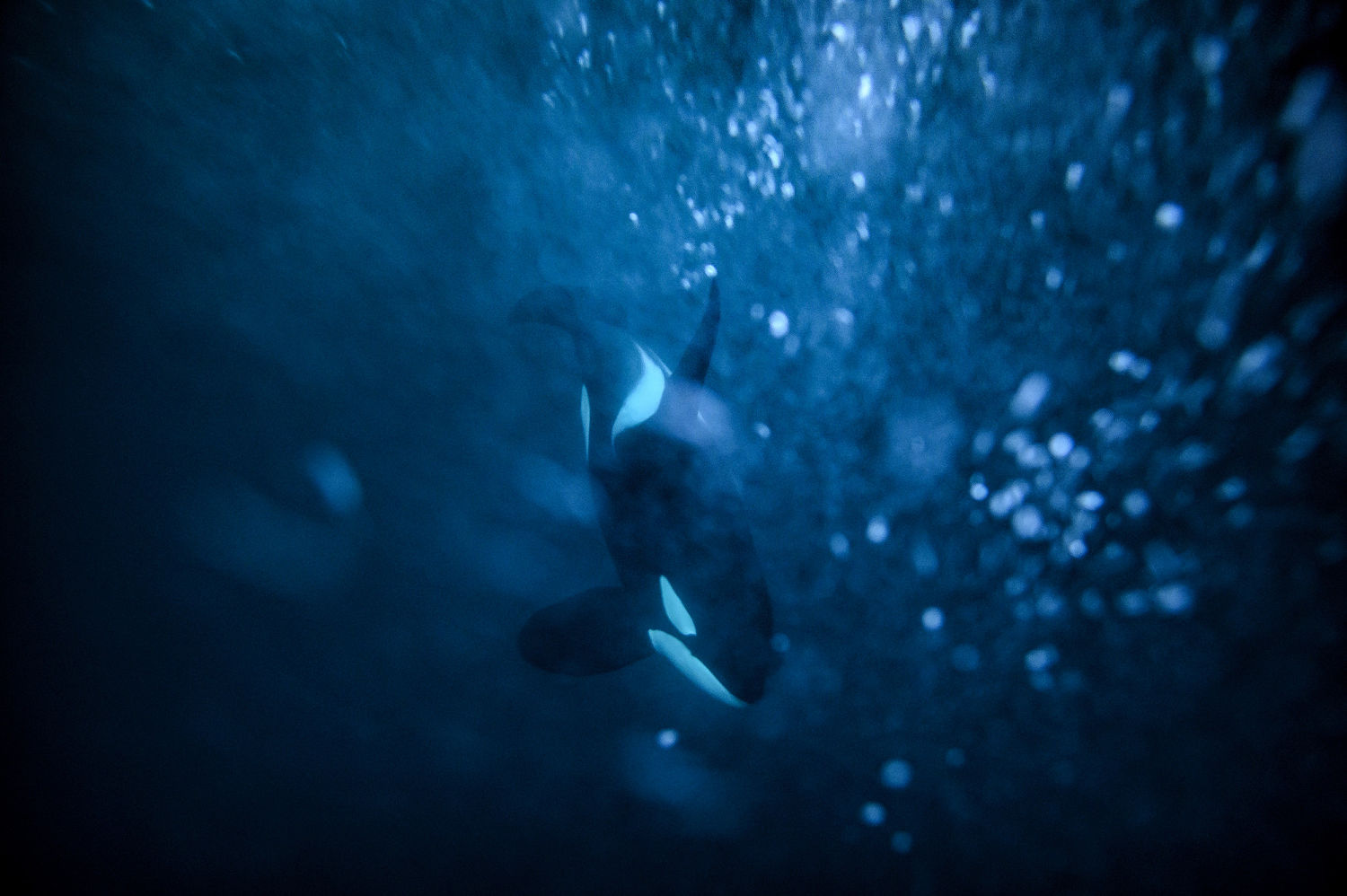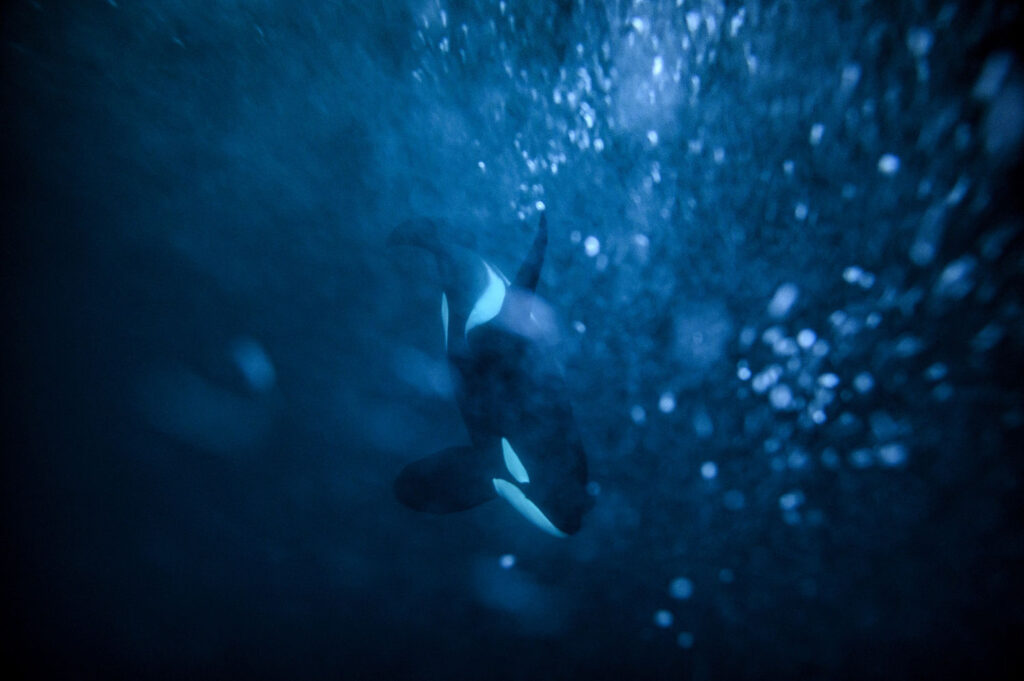
Some orcas have a taste for liver — specifically, the livers of great white sharks.
Videos taken by scientists in Mexico reveal how the crafty whales manage to snag bites of the apex predators’ fatty organs.
Researchers filmed two orca hunts in the Gulf of California — one in 2020 and another in 2022. They show the pods attacking young great white sharks by flipping them on their backsides to stun them, then slicing their sides open to extract their livers. The team published the findings of their video studies in the journal Frontiers in Marine Science on Monday.
In one of the videos, all members of the pod share the pink liver fat while the rest of the shark’s body sinks into the ocean’s depths. During the hunt, a sea lion lurks, seemingly trying to sneak away with a free meal. But the orcas blow bubbles, apparently to deter the pest.
Erick Higuera-Rivas, a marine biologist and documentarian who filmed the hunts from a boat nearby, said he didn’t immediately recognize the significance of the footage until he went to edit it.
“I saw in the monitor that the shark had the liver hanging out on the side, already popped off. And a few minutes later, they came up with the liver in their mouth,” said Higuera Rivas, who coauthored the study. “I was surprised that it could be a great white. I was not believing it.”
Heather Bowlby, a research scientist with Fisheries and Oceans Canada who was not involved in the research, said the footage offered a compelling reminder that even top predators must watch their backs.
“We’re so conditioned to thinking of white sharks as the top of the food chain,” she said. “It is always amazing to be reminded they are prey.”
Higuera-Rivas and his fellow researchers said the hunts appear to be the work of the same group of orcas, which they’ve named the “Moctezuma pod.” The pod frequents the waters off of Baja California and only hunt elasmobranchs — sharks and whales. Higuera-Rivas has been following the pod for more than a decade and filming their behavior, and he’s observed how the whiles adapt their behavior to whatever species the group is targeting.
The only prior evidence that orcas hunt great white sharks comes from South Africa, where they have been preying on the sharks for years and extracting their livers, leaving shark carcasses to wash up on the beach.
Alison Towner, a marine biologist at Rhodes University who has studied the phenomenon in South Africa, said the behavior in Mexico is similar but not identical. The orcas in Mexico have been preying upon young sharks, whereas those in South Africa have primarily targeted adults.
The orca groups likely learned the behavior independently, Towner said.
“Seeing this behaviour in Mexico suggests that specific orca groups have developed their own strategies for hunting sharks,” she said via email. “The same organ is targeted, but the handling technique differs slightly from what we’ve documented in South Africa, which points to group-specific learning.”
The new study shows that the orcas in Mexico have identified a weakness that makes great white sharks vulnerable.
“When it flips the shark upside down, it forces the shark to get into the state that is called tonic immobility,” said Francesca Pancaldi, a coauthor of the study and a shark researcher at the Instituto Politécnico Nacional Centro Interdisciplinario de Ciencias Marinas. “They freeze. It’s like a catatonic state. They just don’t do anything.”
The liver is a fatty and nutritious organ that takes up about one-fourth of a sharks’ body, she added, which provides “a lot of energy.”
Researchers in both South Africa and Mexico agreed that the behavior is not likely new for orcas. Rather, it’s new to scientists, who can now witness and document these hunts more easily because of improvements in drone technology.
“I think it’s been going on for centuries. It’s just that it’s not easy to observe something like this,” Pancaldi said.
It’s possible, though, that changes to the climate have increased the interaction between great white sharks and the Moctezuma pod, she added.
“We actually are seeing more presence of great white sharks in the Gulf of California in the last 10 years,” Pancaldi said, adding that the species is responsive to changes in ocean temperatures during climate patterns like El Niño.
In South Africa, scientists took notice of orca attacks on great white sharks about a decade ago, Towner said. The attacks sent the sharks fleeing from the normal spots where they feed, rest and reproduce, called aggregation grounds.
“IRepeated predation has caused white sharks to abandon former core aggregation sites entirely,” Towner said. “Many sharks have likely moved offshore or into less monitored regions, which reshapes the coastal ecosystem.”
After the sharks left their hangouts, populations of cape fur seal and sevengill sharks climbed. That subsequently caused a crash in those species’ main prey — like small fish and small sharks — according to research published in Frontiers in Marine Science earlier this year.
Towner said just two adult male orcas, named Port and Starboard, have been behind repeated attacks on the white sharks in South Africa. The attacks have put pressure on great white sharks, which are slow to grow and reproduce, and it’s possible that could happen in Mexico, too, if the behavior becomes more frequent, she said.
